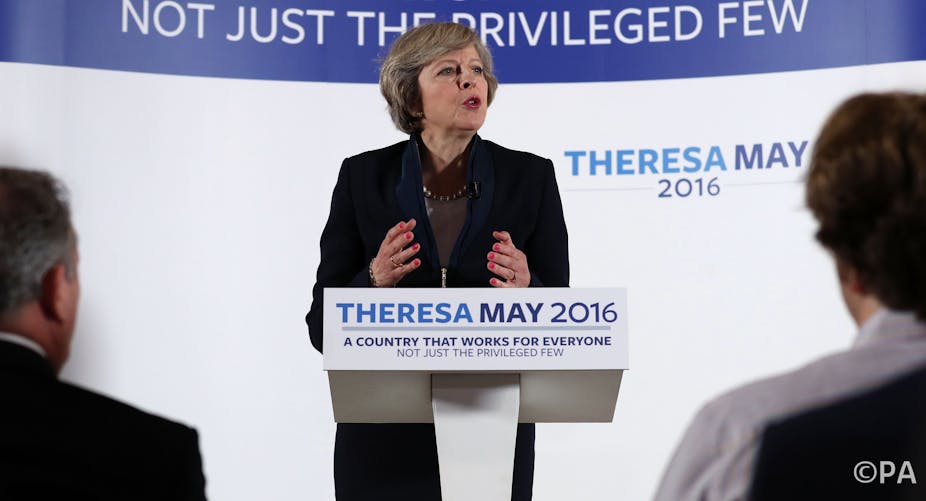The most radical proposal for the extension of workplace democracy in a generation has been made not by Labour leader, Jeremy Corbyn, but by Theresa May, the UK’s new prime minister.
May outlined her stance on a number of issues as she bid for the premiership. They formed part of her pitch for a new form of Toryism to appeal to the whole nation, including employees and employers, citizens and consumers, and rich and poor.
Central to her vision was “putting people back in control” and, when it comes to business, having employee representatives on company boards. It signalled that May’s government would neither be a continuation of Cameron’s, nor a bonfire of labour market regulations that her rival Andrea Leadsom favoured.
Any right-minded trade unionist or socialist should welcome May’s proposal. Putting workers on the boards of public limited companies brings the issue of workplace democracy to the top of the political agenda.
But any right-minded trade unionist or socialist will also want to suspend judgement on how far to welcome May’s proposal until they see exactly what she is putting forward. The devil, after all, will be in the detail.
Lessons from history
First off, the proposal was made at the beginning of what was expected to be a three-month leadership campaign. Plus, the reaction to it from business leaders – important supporters of the Conservative Party – was lukewarm to say the least.
History offers any intrigued trade unionists and socialists further reason to curb their enthusiasm. The last time they were given what seemed like a simple, unambiguous commitment from a prime minister in waiting was from Tony Blair in 1996. He promised to pass a law that allowed union members to gain legal union recognition from a recalcitrant employer where they constituted a simple majority.
The Employment Relations Act 1999 was the result. It brought in the right for workers to be accompanied in grievance or disciplinary hearings, but it also allows employers – as a result of their lobbying – to influence whether this legal union recognition is granted or not. So what resulted was a weak form of recognition and not the one that unions had hoped for or expected.

There is no reason to think a similar process of watering down will not happen with May’s proposal. That is assuming it is not a campaign proposal that gets quietly dropped when the so-called “serious business” of being PM – and negotiating Brexit – begins.
But the longer historical record has an even more illuminating light to shed on May’s proposal. Back in 1975, the then Labour government in Britain commissioned a Committee of Inquiry on Industrial Democracy to look into this same idea of having workers represented on boards of directors and greater trade union involvement in the process of how companies are run.
Led by Oxford academic Alan Bullock, the committee published its main report in 1977. This recommended that in companies with more than 2,000 employees, for every director that represented capital (so the employers or their management) there would be a representative of labour. There were also to be independent third party representatives, like lawyers or academics, to cast the deciding vote or break any deadlock.
The proposals were never implemented so the experiment of industrial democracy in the form of worker directors never took off. This was a result of the then Labour government’s implosion, a lack of agreement among the unions on how it would work, and because new PM, Margaret Thatcher, was determined to reduce worker and union rights upon entering Downing Street in May 1979.
Equal representation
But the main report did at least flag up that if workers are to be genuinely influential on a company board, they at least need more than token representatives. Workers must be given equal representation with capital as a core element of any scheme of May’s. This includes sitting on the main board of the company and not auxiliary or secondary ones and being given full access to company information.
There are also a host of other stipulations that are necessary to ensure effective representation. These concern how the creation of worker directors on company boards is to be triggered and the process by which this is managed.
For example, will the law require all public limited companies to have worker directors, without exception? Or what level of support among the workforce is needed to create them? Also, if there are to be referenda on creating worker directors, will employers be able to use their resources (financial, ideological, organisational) to campaign against their creation? And so on and so on.
So right-minded trade unionists and socialists will want to see some serious meat put on the sparse bone of May’s proposal before making a more definite judgement. As she gets on with the real business of government, the ball is now in May’s court.

